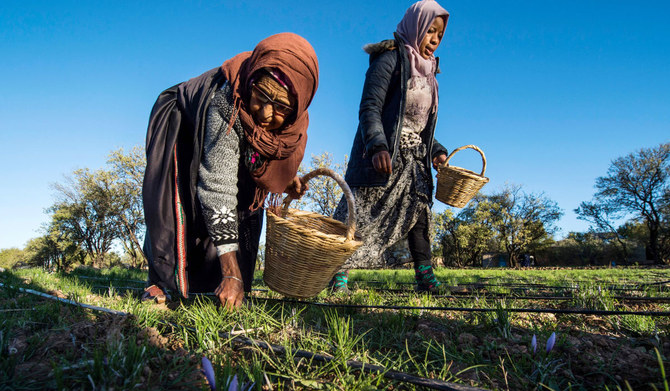Hafed Al-Ghwell
Morocco’s agricultural sector faces a daunting conundrum that mirrors a broader crisis unfolding across the Global South. As the world grapples with the escalating effects of climate change, nations such as Morocco find themselves at a critical juncture as they attempt to find a balance between food production and dwindling water resources.
By examining the mounting challenges in Morocco, we have a lens through which to view similar impending difficulties that many countries in the Global South are likely to run into unless urgent global actions are taken to mitigate the effects of climate change and adhere to the Paris Agreement’s warming targets.
The plight of Moroccan agriculture, exacerbated by prolonged droughts and climatic adversities, has far-reaching consequences that extend far beyond the country’s rural landscapes to deeply affect its broader economy, and reveal vulnerabilities in the face of natural disasters such as the 2023 earthquake.
The critical role of agriculture in the Moroccan economy should not be underestimated. The sector employs about 40 percent of the nation’s workforce and accounts for approximately 14 percent of its gross domestic product. However, a continued reliance on water-intensive practices, and the subsequent strain on water resources as a result of climatic shifts, have led to a precarious situation not only for farmers but for the entire economic fabric of the country.
Morocco’s situation is not unique. Since the 1960s, global water withdrawals have more than doubled, with much of them attributed to agriculture. Climate change and the increased use of water for irrigation, in response to the need to boost food production, have caused the problem of water scarcity to become significantly worse, particularly in the arid regions of the world.
Meanwhile, reduced precipitation levels have caused more severe and frequent droughts, leading to yield shortfalls in basic staple crops and increases in food imports that leave many countries vulnerable to external shocks — as was seen when the war in Ukraine limited wheat imports, driving food inflation across North Africa.
The drought dilemma in Morocco, which is particularly pronounced in vital agricultural regions such as the Souss, has put a severe dent in the country’s exports. With dams nearly emptied and irrigation halted, farmers face the grim reality of jeopardized investments and crop failures. This agricultural distress has a domino effect on the rest of the economy, disrupting supply chains and financial stability for businesses linked to the sector, as loan repayments and debt collection become more challenging.
Even as populations grow and demand for food skyrockets, the viability of any medium to long-term investments in agriculture is jeopardized, which will further complicate the expensive but much-needed transition to water-efficient farming and crop diversification.
Moreover, the contraction of irrigable land from about 750,000 to 400,000 hectares is another troubling vector in the acute scarcity of resources confronting Moroccan agriculture. The economic ramifications of an agricultural downturn extend to other critical sectors, as Moroccan businesses are forced to grapple with navigating financial uncertainty and trying to adapt to a changing economic landscape still reeling from the 2023 earthquake.
The aftermath of that disaster added another layer of challenges to an already strained agricultural sector. Damage to infrastructure, particularly roads and irrigation canals, has disrupted market access and water supplies. Rebuilding efforts are diverting resources from potential investments in agricultural resilience, such as the adoption of drought-resistant crops and improved irrigation technology. The devastation, particularly in the Marrakech-Safi region, which is a significant contributor to gross domestic product through tourism, poses an additional layer of economic vulnerability.
The effect of the earthquake on agriculture and tourism, two pillars of the Moroccan economy, underlines the interconnections between natural disasters and climate-induced adversities. The estimated reduction in Morocco’s GDP of up to 8 percent as a result of the quake alone highlights the severe economic toll of such natural disasters, and this is compounded by preexisting vulnerabilities such as water scarcity and agricultural dependency.
Disruptions to agricultural activities and the direct hit that tourism has taken underscore the urgent need for a resilient and diversified economic strategy.
The challenges in Morocco and the country’s attempts to mitigate them are a microcosm of the broader struggles facing the Global South, where many regions contend with a similar dilemma of attempting to manage scarce water resources amid growing demand and intensifying climate change-induced disasters. The challenges range from food production to energy security.
In a sense, Morocco’s predicament is therefore emblematic of a looming global crisis. The UN estimates that climate change-induced water scarcity could displace up to 700 million people by the end of this decade.
The implications of this are profound, with the potential for mass migrations and escalating conflicts over dwindling resources. This dire scenario demands an even greater sense of urgency in addressing climate change and water management, not just as environmental or agricultural issues but as matters of global security and human survival.
However, the question remains: How can Morocco, and by extension other countries in similar predicaments, navigate these challenges?
The answer lies in a multifaceted approach that encompasses sustainable water management, investment in climate-resilient agricultural practices, and international cooperation.
Morocco must prioritize the efficient use of its water resources. This includes investment in modern irrigation techniques, such as drip irrigation, that can significantly reduce water usage while maintaining crop yields.
Additionally, a transition to drought-resistant crops and the adoption of agricultural practices that enhance soil-moisture retention can mitigate the effects of climate change. Morocco’s experiments with argan trees, which are well-adapted to arid climates, offer a promising avenue for sustainable agriculture.
Post-earthquake efforts to rebuild in Morocco, or any region facing similar challenges, present a critical opportunity not only to restore but to significantly improve agricultural infrastructure. These efforts should aim to enhance resilience to future disasters and optimize water efficiency through the integration of the latest innovations.
The implementation of supportive policies for smallholders, including subsidies for modernization projects and improved access to credit, is pivotal to the efforts to shore up the agricultural sector.
Access to credit opens the door for farmers to make the necessary investments without the immediate financial burden they bring, while subsidies can lower the entry barrier to adopting innovative technologies that are crucial both for increasing productivity and ensuring sustainability.
But we cannot deny one immutable truth: global challenges require global solutions. International support, both in terms of funding and knowledge exchange, will be crucial to help Morocco and other nations in the Global South adapt to the changing climate. Initiatives such as the Green Climate Fund play a vital role in financing projects aimed at enhancing climate resilience.
Morocco’s struggles with water scarcity and food security in the face of climate change are harbingers of the challenges that much of the Global South faces. This crisis necessitates a reevaluation of agricultural practices and concerted efforts to embrace sustainable, climate-resilient approaches.
Moreover, it highlights the urgent, critical need for global action to mitigate the effects of climate change, and underscores the interconnected nature of our world.







